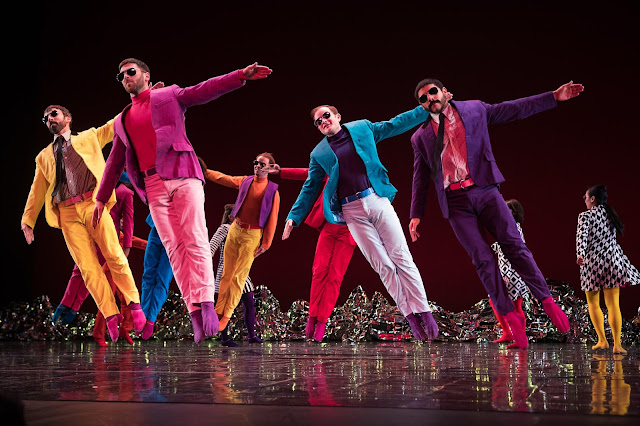Investing in Dance: The Support That Makes Pepperland Possible
 |
| Photo by Mat Hayward |
Dance companies often rely on support from foundations and individual donors to fund new works, and only after the premiere convince presenters to schedule performances. Mark Morris Dance Group, however, has developed a model that is unusual in the dance world, whereby multiple arts institutions join together to commission a piece—often years before it will reach their stages.
This approach began with Mozart Dances (2006), a three-way commission, and grew over time with Romeo and Juliet (2008), Acis and Galatea (2014), and Layla and Majnun (2016). It reaches unprecedented scale with Pepperland, which received advance funding from no fewer than 17 institutions.They span the United States, Canada, and the United Kingdom; are based in towns, cities, and on university campuses; and include both non-profit and for-profit entities.
“The support provided by these institutions sustains us, and shows their unique understanding of the hidden costs involved with creating dance works of this size,” says Nancy Umanoff, executive director of Mark Morris Dance Group.
This funding model serves the commissioning partners well, too, and is based largely on Morris’s importance and the trust they have in his work. “Like all arts organizations, we need to be careful about how we marshal our resources. But the excellence that Mark represents is at the heart of what we do, so we support it wholeheartedly,” says Matias Tarnopolsky, director of Cal Performances at the University of California, Berkeley, which has worked with Morris and his dancers for three decades.
Mike Ross, director of the Krannert Center for the Performing Arts of the University of Illinois at Urbana-Champaign, echoes Tarnopolsky and adds that the Dance Group’s offstage outreach has also been crucial in furthering their close-knit relationship. “In addition to annual performances, they have brought workshops and other activities to our campus, and to the local population at large,” says Ross. “Because they have become part of our community, it is easy for us to support them and their work on this level.”
A separate community—one with a reputation for supporting superior new work—has coalesced around the commissioning organizations themselves, enticing others to join. Pepperland marks the Banff Centre’s first commission of a Morris work, yet there are no plans for the piece to be performed on its stages in Alberta, Canada; it will instead, by arrangement with the Banff Centre, play at the Sony Centre in Toronto, more than 2,000 miles away. “We wanted to support Mark and his company, of course, but also for audiences to know that we support work of this caliber alongside other great organizations,” says Janice Price, the Banff Centre’s president. “It is incredibly rewarding to be seen as part of the ecosystem that makes this happen.”
And if history is any indication, that ecosystem will only continue to strengthen and grow.
---
Ryan Wenzel is a New York-based writer and editor.
Pepperland is a Mark Morris Dance Group production in association with American Dance Festival, Durham, North Carolina; BAM, Brooklyn, New York; Banff Centre for Arts and Creativity with the Sony Centre, Toronto, Canada; Cal Performances, UC Berkeley, California; Celebrity Series of Boston, Massachusetts; The City of Liverpool, England, U.K.; Dance Consortium UK; Hopkins Center for the Arts, Dartmouth College, Hanover, New Hampshire; International Festival of Arts & Ideas, New Haven, Connecticut; The John F. Kennedy Center for the Performing Arts, Washington, D.C.; Krannert Center for the Performing Arts, University of Illinois at Urbana-Champaign; La Jolla Music Society, La Jolla, California; Meyer Sound, Berkeley, California; Seattle Theatre Group, Seattle, Washington; Segerstrom Center for The Arts, Costa Mesa, California; UCSB Arts & Lectures, Santa Barbara, California; and White Bird, Portland, Oregon.


Comments
Post a Comment